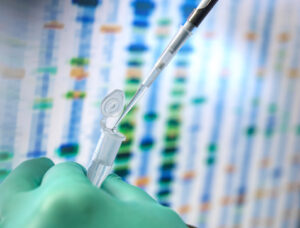Both transfusion-dependent β-thalassemia (TDT) and sickle cell disease (SCD) are common monogenetic diseases caused by mutations in the gene encoding the β-subunit of hemoglobin. Many patients with TDT and SCD require frequent transfusions and iron chelation. Allogeneic hematopoietic-cell transplantation can cure both TDT and SCD, but this treatment may have severe side effects and is only feasible for young children with an HLA-identical sibling donor. Both CRISPR-Cas9 gene editing and lentiviral gene therapy are in early trials for treatment of these β-globin hemoglobinopathies; preliminary results have been published in The New England Journal of Medicine. Both treatments aim to silence BCL11A, a transcription factor that represses ɣ-globin expression necessary for fetal hemoglobin in erythroid cells. By downregulating BCL11A, the increased expression of ɣ-globin and fetal hemoglobin can compensate for the hemoglobinopathies caused by TDT and SCD. After myeloablation, a 19 year-old female with TDT and a 33 year-old female with SCD both received autologous CD34+ cells with the gene for BCL11A targeted for down regulation by CRISPR-Cas9 editing. In a separate study, six adult patients with SCD received autologous CD34+ cells transduced with a lentiviral vector encoding a short hairpin RNA targeting BCL11A mRNA. Gene therapy was successful in all 8 patients based on follow-up over 6 months. Fetal hemoglobin was successfully induced in all patients and clinical symptoms of both hemoglobinopathies were reduced or absent during follow-up. All but one patient became transfusion independent. The long-term effects of both therapies need to be assessed.
References:
- Esrick EB, Lehmann LE, Biffi A, Achebe M, et al. Post-transcriptional genetic silencing of BCL11A to treat sickle cell disease. The New England Journal of Medicine 2020
- Frangoul H, Altshuler D, Cappellini MD, Chen YS, et al. CRISPR-Cas9 gene editing for sickle cell disease and β-thalassemia. The New England Journal of Medicine 2020

